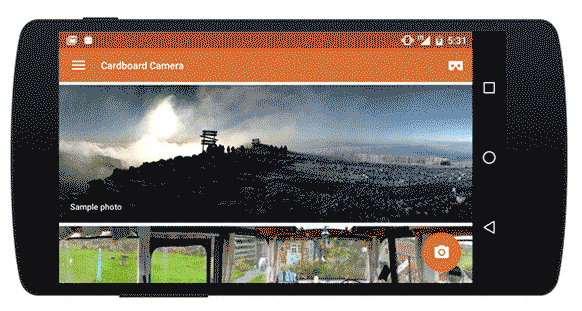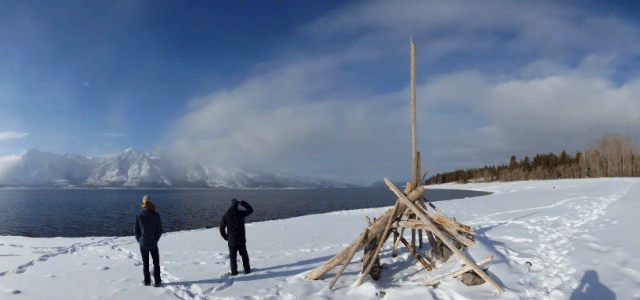Google has launched a new ‘Cardboard Camera’ app that allows users to take virtual reality (VR) photos with their smartphone.
The feature allows people to capture moments in time which they can ‘relive in virtual reality’.
The VR photos are 3D, so things that are near actually look near and things that are far really do look far.

Example of someone using the Google Cardboard Camera app.
Taking photos with the app is easy. Users simply have to hold their phone in a vertical position, select the camera option, and move around a circle – completing a 360-degree turn. Users also have the ability to capture sound if they want.
Google’s description of the app reads:
“Cardboard Camera takes VR photos—moments in time you can relive in virtual reality. Hear the sounds as they happened, and look around to see the scene in every direction. VR photos are 3D, so near things look near and far things look far. Whether its a vacation getaway or a family get-together, VR photos bring you back to that moment,”
The app works with any Android phone and compatible Cardboard viewer.
When a user’s phone is in the Cardboard viewer they will be able to view VR photos and look around from any direction, creating a new and immersive experience of viewing photos.

Photo taken with Cardboard Camera at Jackson Lake, Wyoming. This simulates the 3D effect when seen in a Cardboard viewer.
Google said in an official blog post: “With Cardboard Camera, anyone can create their own VR experience. So revisit the mountaintop that took hours to hike, or the zoo where you saw (and heard) the monkeys, or your birthday party with the cake out and candles still lit. Capture the moments that matter to you and relive them anytime, from anywhere.”
According to PCMag, the app does a great job of simulating distance and depth within the pictures.
Davey Alba at Wired said the following about the new VR app:
“Unlike VR video, the elements in the picture aren’t moving; it’s a stillframe moment in time, enhanced by the natural sounds of the scene. It reminds you a bit of looking at a Snapchat—at least, that’s what it did for me—except it’s way more immersive. Though the scene is static, it still did feel like I had been transported into other worlds.”
